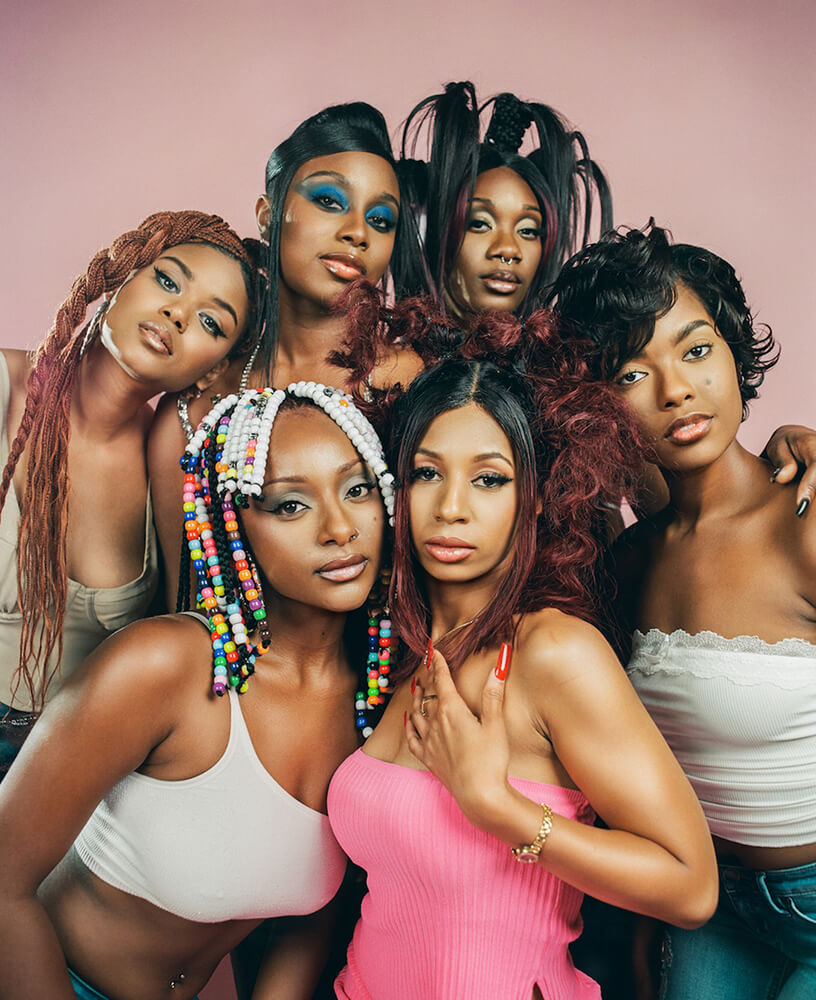“HUMANS OF
THE WORLD”
ANNOUNCING THE WINNERS
We’re delighted to present the results of our October 2023 competition judged by British photographer of a generation Martin Parr.
“Recognize yourself in he and she who are not like you and me.” – Carlos Fuentes
What is the human experience today? It’s an impossible question to answer, and as the world population tops 8 billion, it becomes ever more complex – 8 billion intertangled sets of histories, circumstances, needs and aspirations. These 20 images cannot hope to provide an answer, and yet they do touch on themes that resonate in us all – hardship, ageing, resilience, leisure, fandom, consumerism, freedom of expression… and while the uncertainty and difficulties of our times are reflected in some of them, there is joy, humor and pleasure in many others. They talk about work, parenthood legacy, and the everyday realities of human life. These stories may be unique, but they allow us to see fragments of ourselves in others, reminding us that there is more that unites than divides us. An important message now more than ever.
Congratulations to the selected photographers, and thank you to everyone who submitted. You can join the discussion on Facebook and Instagram.
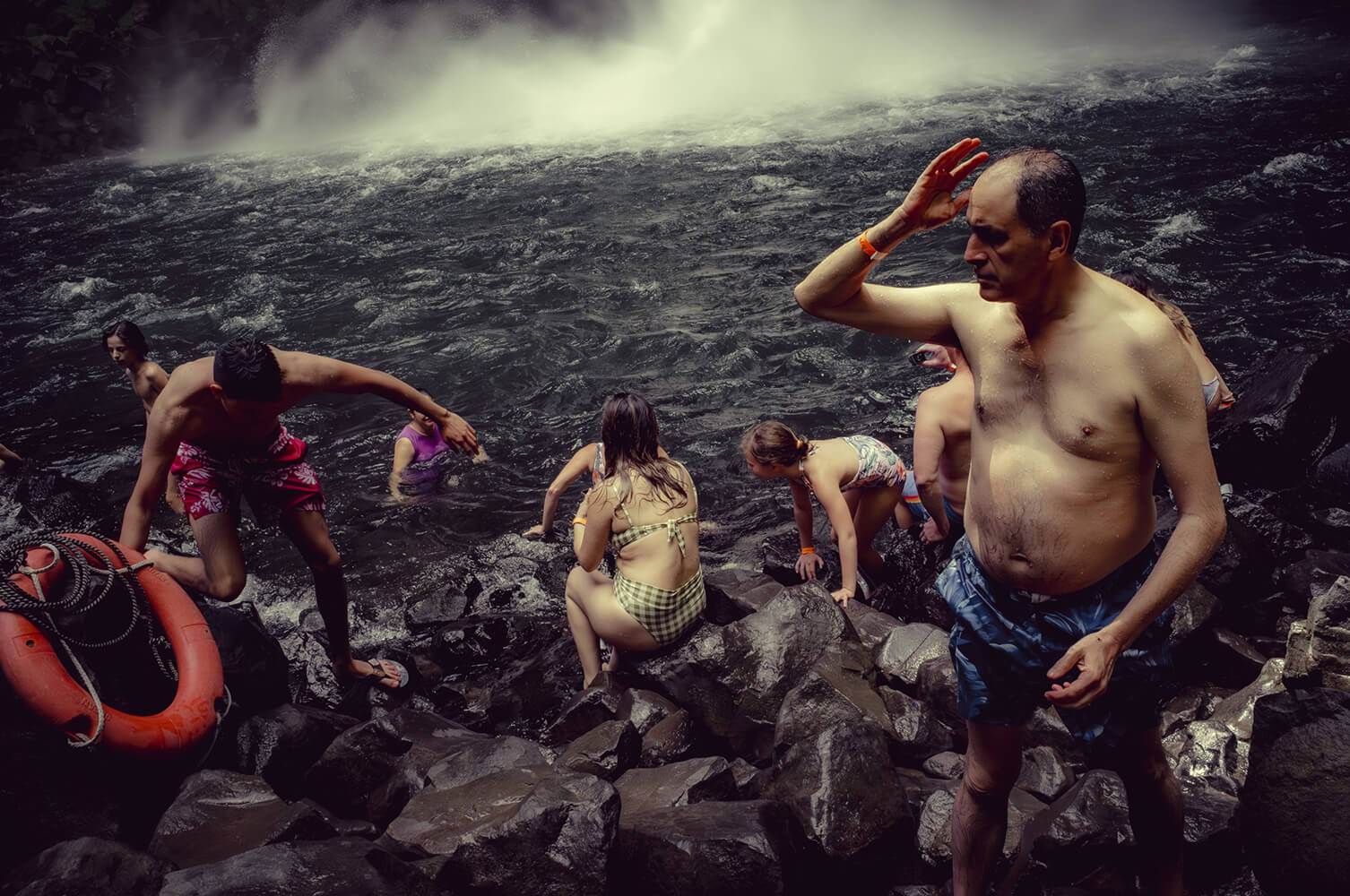
1ST PRIZE: SATO KAM
This photo has a great atmosphere, so much so that I initially suspected it to have been created in Photoshop. But the dark sky, the rough see, and the odd gestures caught in the moment add to the surreal feel of the shot. – MARTIN PARR
There is a sense of confusion and distress surrounding this scene, a popular swimming spot looks somewhat turbulent as the mist lowers and the waters darken. This perception may all be created by the photographer’s askew perspective and coloring of the image, but the sense of chaos is emphasised by the subjects crawling, climbing and looking in different directions. A cleverly cropped viewpoint that adds an uncertain aspect to a typical holiday snap-shot scene. – LIFE FRAMER
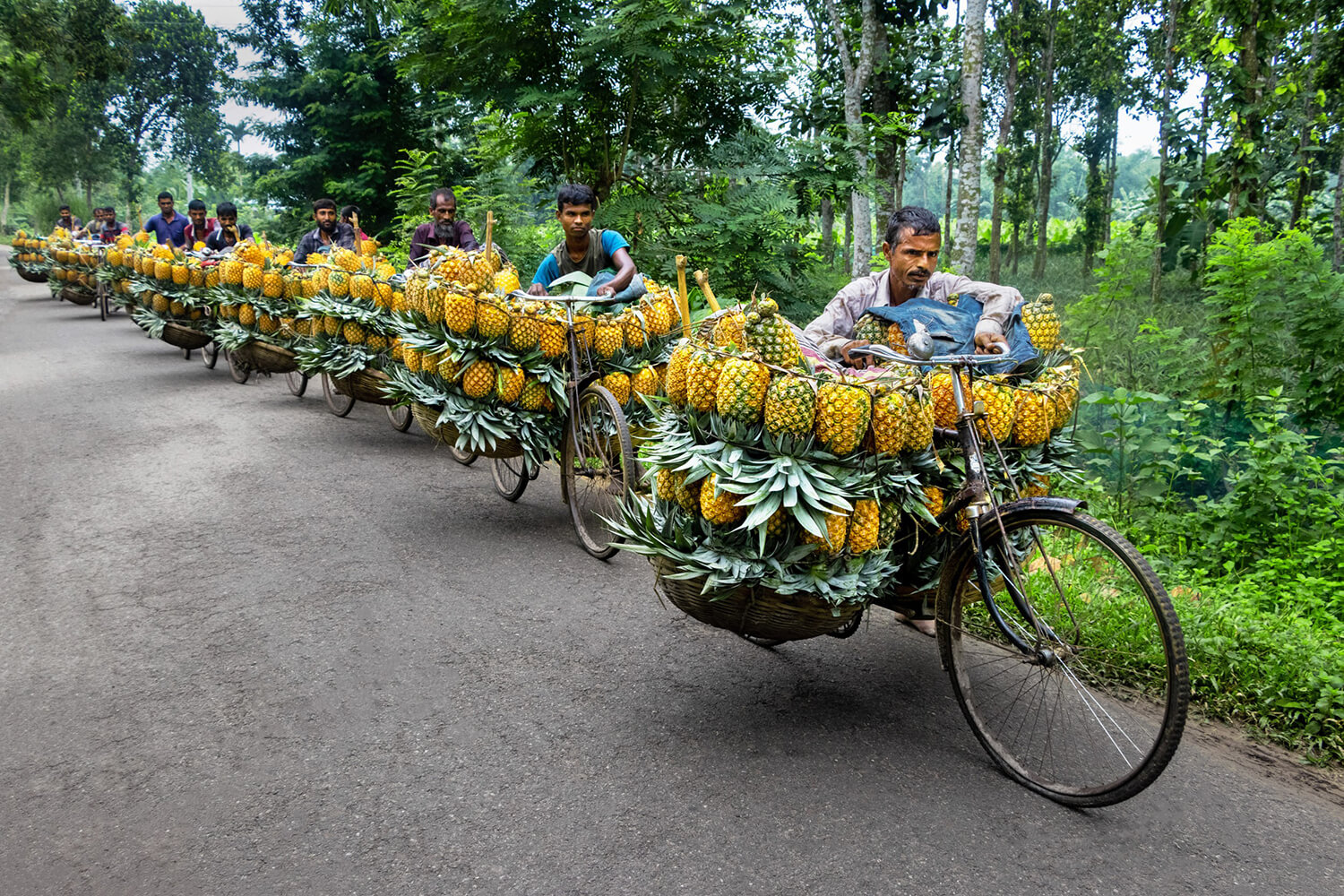
2ND PRIZE: JOY SAHA
The line of pineapple sellers was truly delicious, particularly how the serious expressions on their faces juxtapose with the subject matter. Where will they go to sell these? I’m intrigued. I have fresh pineapple every morning so this probably influenced my decision. – MARTIN PARR
This image is one of perspective and pattern, as the viewer is captivated by the sheer volume of neatly packed bunches of pineapples en route to their destination. It may be a revelation to most to see how the globally popular fruit is transported in these areas – although potentially a better effort environmentally, the working conditions for people involved are far more than questionable. More context to the intention with this image would be welcomed. – LIFE FRAMER
Photographer statement – Pineapple Parade. Farmers parade bicycles laden with pineapples at a market in the town of Madhupur, northwest of Dhaka. The use of bicycles reduces transportation costs for the farmers, who can carry up to 100 pineapples on each bike. The harvested pineapples are loaded in bicycles and pushed all the way through a forest to the biggest pineapple market in Bangladesh.
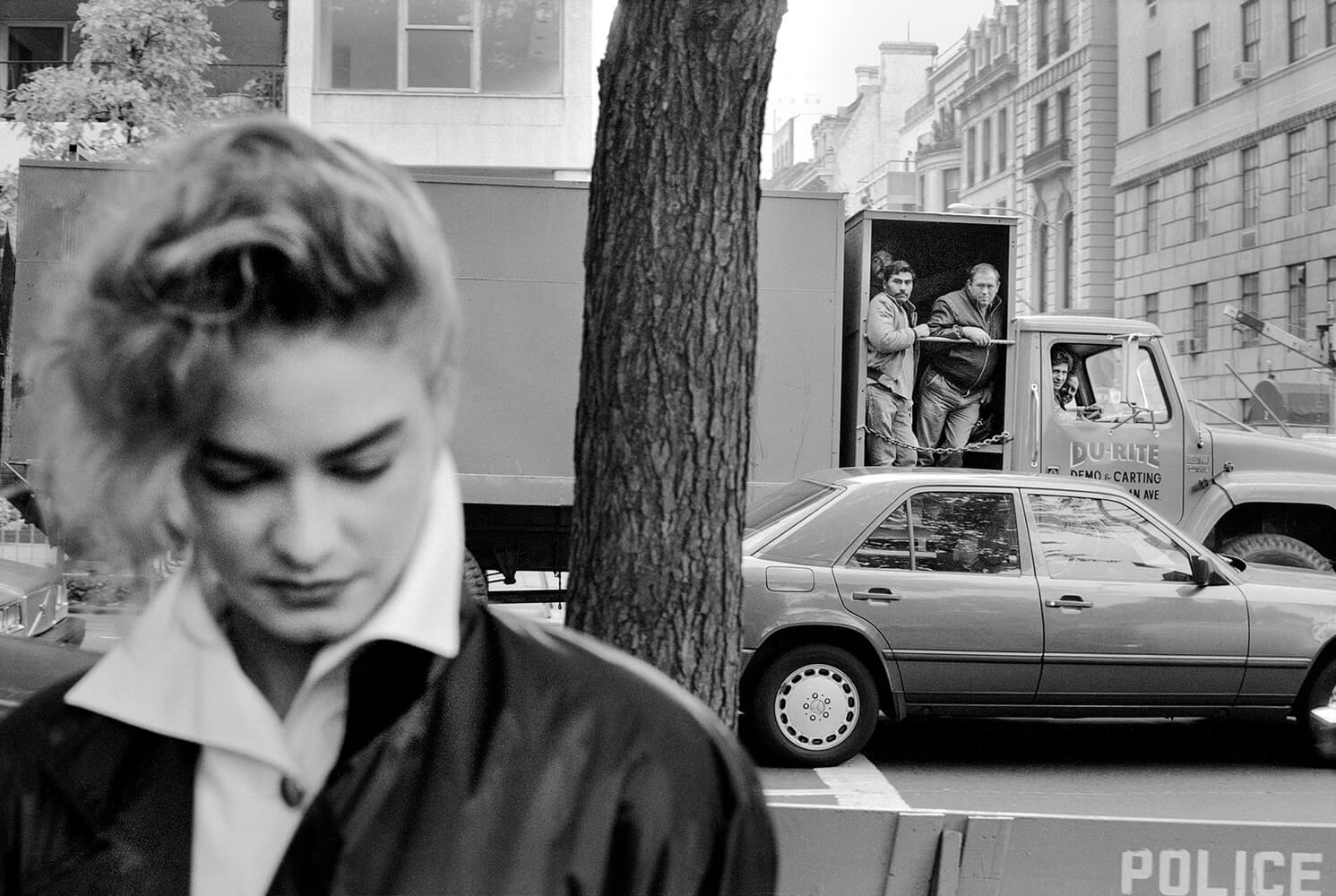
CHARLES FORD
There is a dated quality to this image – the vehicles, fashion and style look – the soft black and white tones depicting a 80’s New York street scene. However the sexist narrative that appears within the image is, unfortunately, a timeless one. It’s not entirely clear if the men in the truck are leering at the out-of-focus woman in the foreground, or if they’re merely intrigued by some other element happening out of scene, but the photographer places their focus on the group, which seems to enforce a tone of objectification. It’s a remarkably well-captured scene of everyday sexism.. – LIFE FRAMER
Photographer statement – Du-Rite Demo & Carting, NYC.
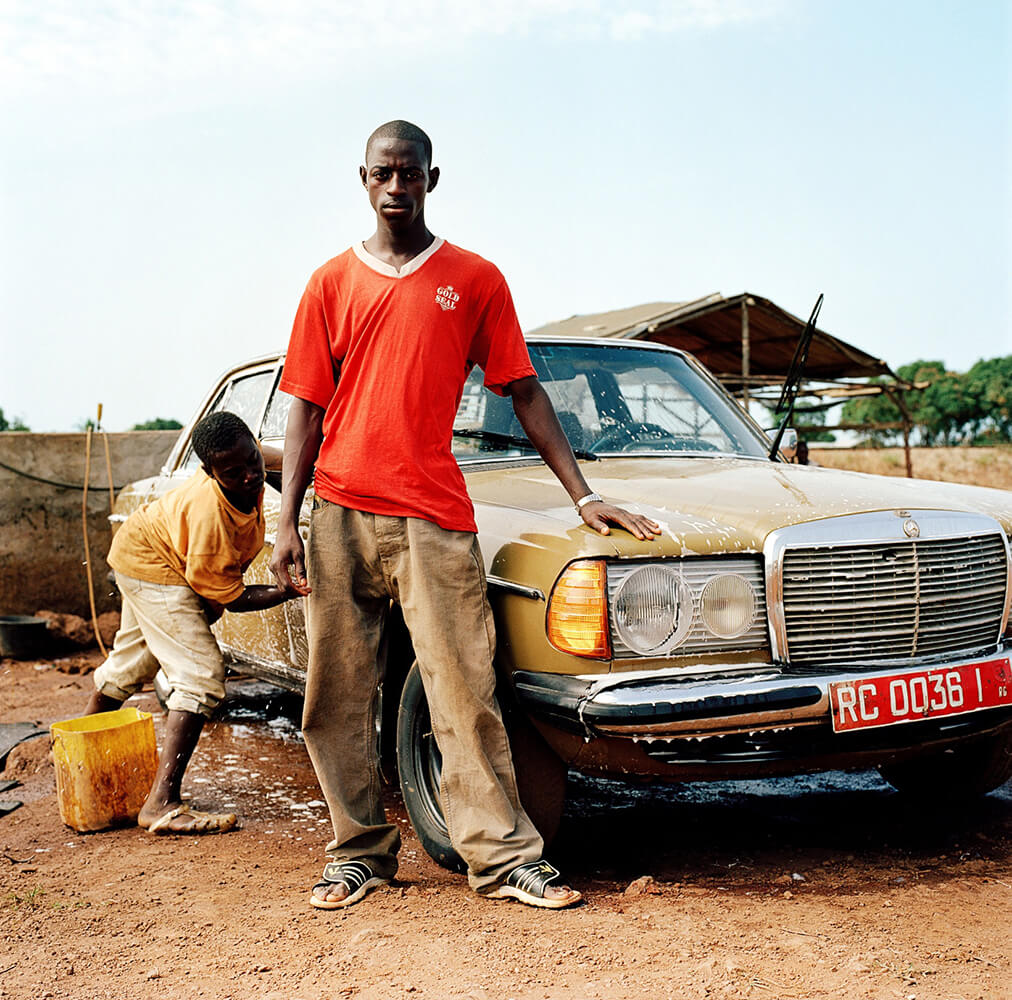
ANDREAS SIRCH
The main subject – presumably the car owner – cuts a confident pose against his prized possession with his bright red t-shirt and facial expression of mild irritation. The viewer takes in the young carwasher, busy in the background, deep in their chore, and considers their relationship to the main subject. The use of bold color and rich tones emphasizes the status symbol that accompanies ownership of these cars. The wider series would be enjoyable to observe in full. – LIFE FRAMER
Photographer statement – From the series Conakry Car Owners, taken in Guinea.
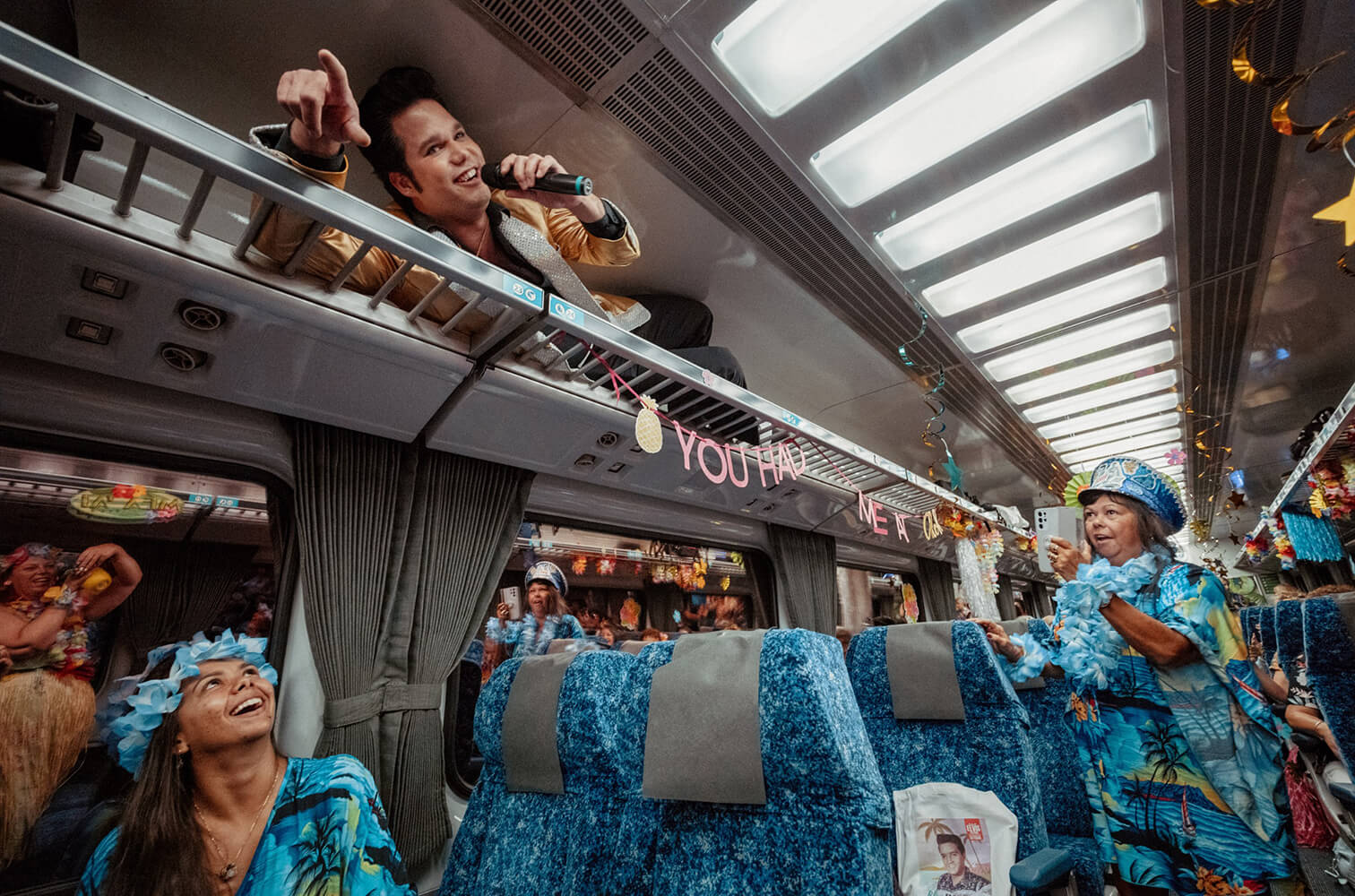
YU PANG GEORGE CHAN
The viewer is met with a scene that overwhelms the senses, the energy and vibrancy is embraced by each subject and reflected back in beaming facial expressions. The perspective from where the photograph is taken forces the viewer’s eyes to dart around the scene, absorbing each element of the image as separate aspects. The reflections in the bus window add to the depth of detail, intensifying this spirited and immersive scene that flamboyantly celebrates an icon of the music world, along with an idiosyncratic aspect of human nature. – LIFE FRAMER
Photographer statement – Elvis on the train: An Elvis tribute artist, sings on the luggage rack of the “Elvis Express Train” heading to the Elvis Festival. The train is filled with the sounds of Elvis, and fans are having a blast celebrating the King’s music.
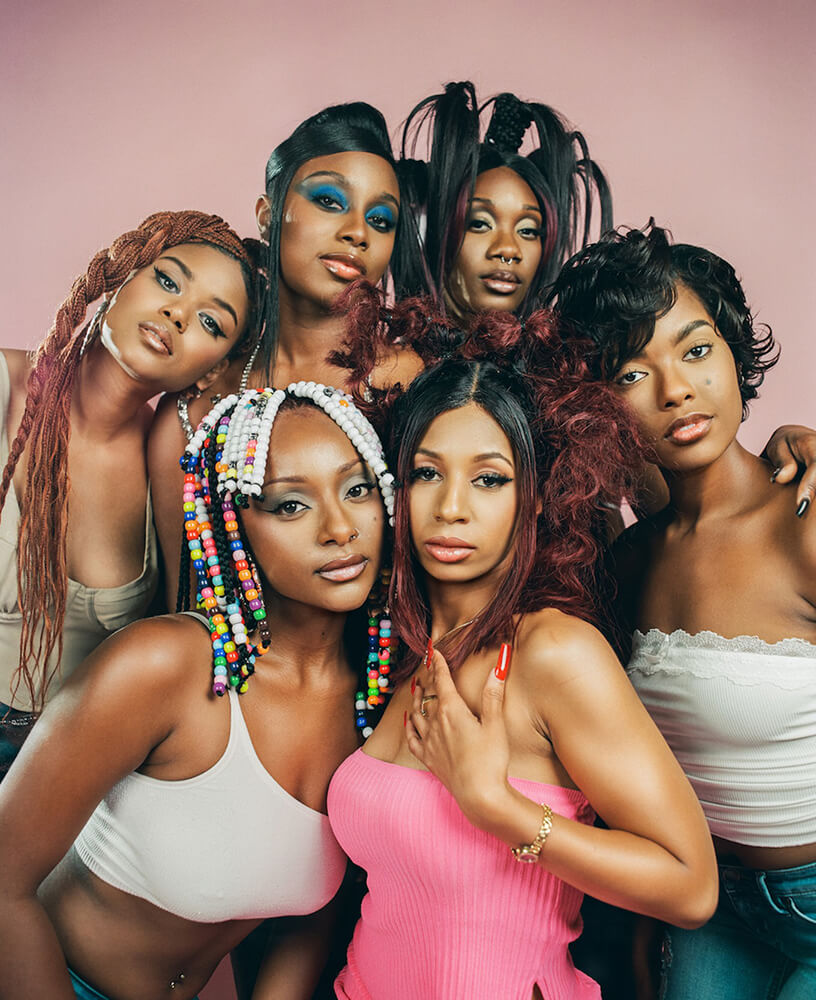
JADA IMANI M
From style and tones to structure and posing, the image resembles a poster of an early 2000’s girl group – edgy, aspirational and trend setting. The photograph reads as a note on the importance of ensuring younger generations see themselves reflected in society holding important, inspiring and influential roles – much like how this photographer saw their mother from a young age. The wider series would no doubt holds an poignant position in championing black culture and beauty aesthetics. – LIFE FRAMER
Photographer statement – INFINITY is a visual project meant to showcase Black beauty in the past, present, and future. Growing up with a mother who is a cosmetologist, I had the privilege of spending time in the salon she worked at when I was a child. There were multiple Black hair stylists in the salon whom specialized in different styles. The hairstyles ranged from short cuts, pin ups, braids, twists, press n curls, crimps, and more. These styles were common especially in the 90s and early 2000s. My favorite part of growing up in the salon was viewing the various hair magazines; Black Hair, Hype Hair, and others where you could choose a hairstyle you wanted. These styles are still prevalent today in Black culture.
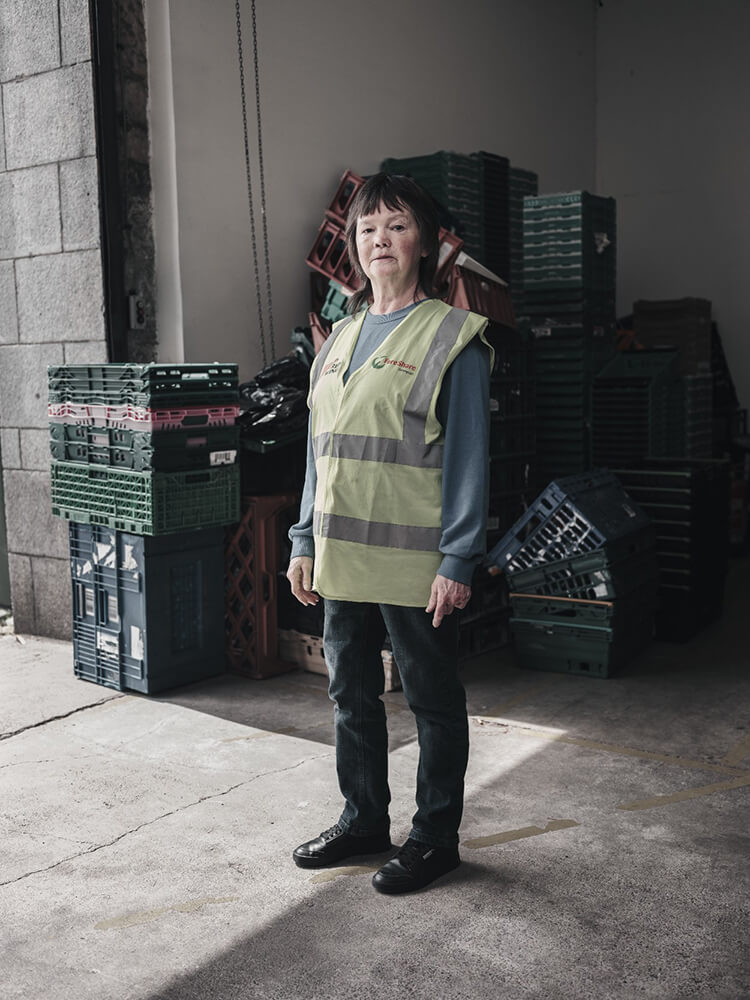
CONOR GAULT
This straight up, full portrait is without the nuances and filters of a styled photoshoot, with the somberness and authenticity the subject matter warrants. The raw and honest approach enforces the reality of this woman’s commitment to supporting and aiding those who are suffering and seriously affected by the cost-of-living crisis. The subject’s expressionless face doesn’t give much insight to her personality but the branded vest allows valuable insight to her character. An understanding of this portrait within a wider series or photo essay would be paramount to giving this image the attention it deserves. – LIFE FRAMER
Photographer statement – Winnie – food bank volunteer, photographed in Aberdeen, Scotland.
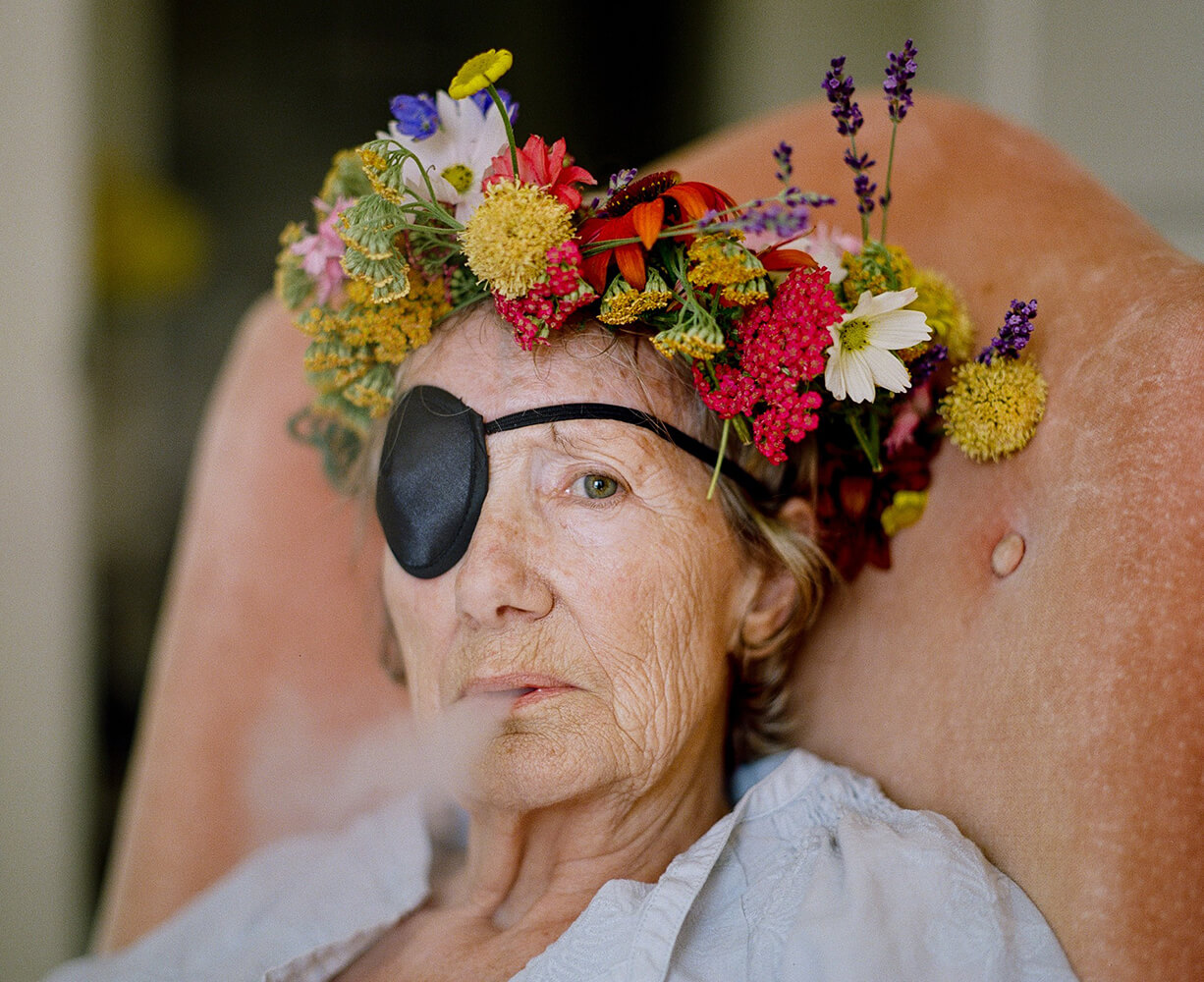
CLAIRE DAM
The portrait captures every ounce of contrast and contradiction that forge the specific personality traits the photographer shares with their mother. The crown of flowers brings a colorful element of joy and hope to a portrait that otherwise appears indifferent, one of a subject who seems slightly jaded of life. An engaging, beautifully realized photograph, both a record of a life and a reflection of the author. – LIFE FRAMER
Photographer statement – From the series I Find You In Myself. In the words of Canadian author Elizabeth Hay, “My mother went in and out of lucidity the way you go in and out of a lake. The lucid waters, the forgetful shore.”
She and I may have our troubled past, but I felt very strongly beginning at the onslaught of her decline that my only responsibility was to honour my mother. How can I be honouring her by photographing her face bruised and cut from a fall? Her sallow flesh? Her fierce but frightened gaze? I don’t think honouring means I have to paint a rosy portrait of ageing and dying. The whole affair is undignified and horrible. I’ve chosen to honour her by witnessing where she is at without flinching; without fear; without shame.
The walls I had built since my childhood to protect and distance myself from her began to crumble as I photographed, developed and then gazed back into the confused, but bold gaze of my mother. From the safety of a print I was able to actively put myself into her place; this place she very, very much wants to leave. And I also began to recognize parts of myself in her that I had previously tried to deny.
Since I was a child we’ve both been described as vulnerable but fierce, painfully honest, but painfully sensitive, hospitable and warm, frightening and intimidating. Through these portraits I’ve been able to see and accept those juxtaposing words spoken over us for 40 years, for better or for worse, because I do, after all, find her in myself.
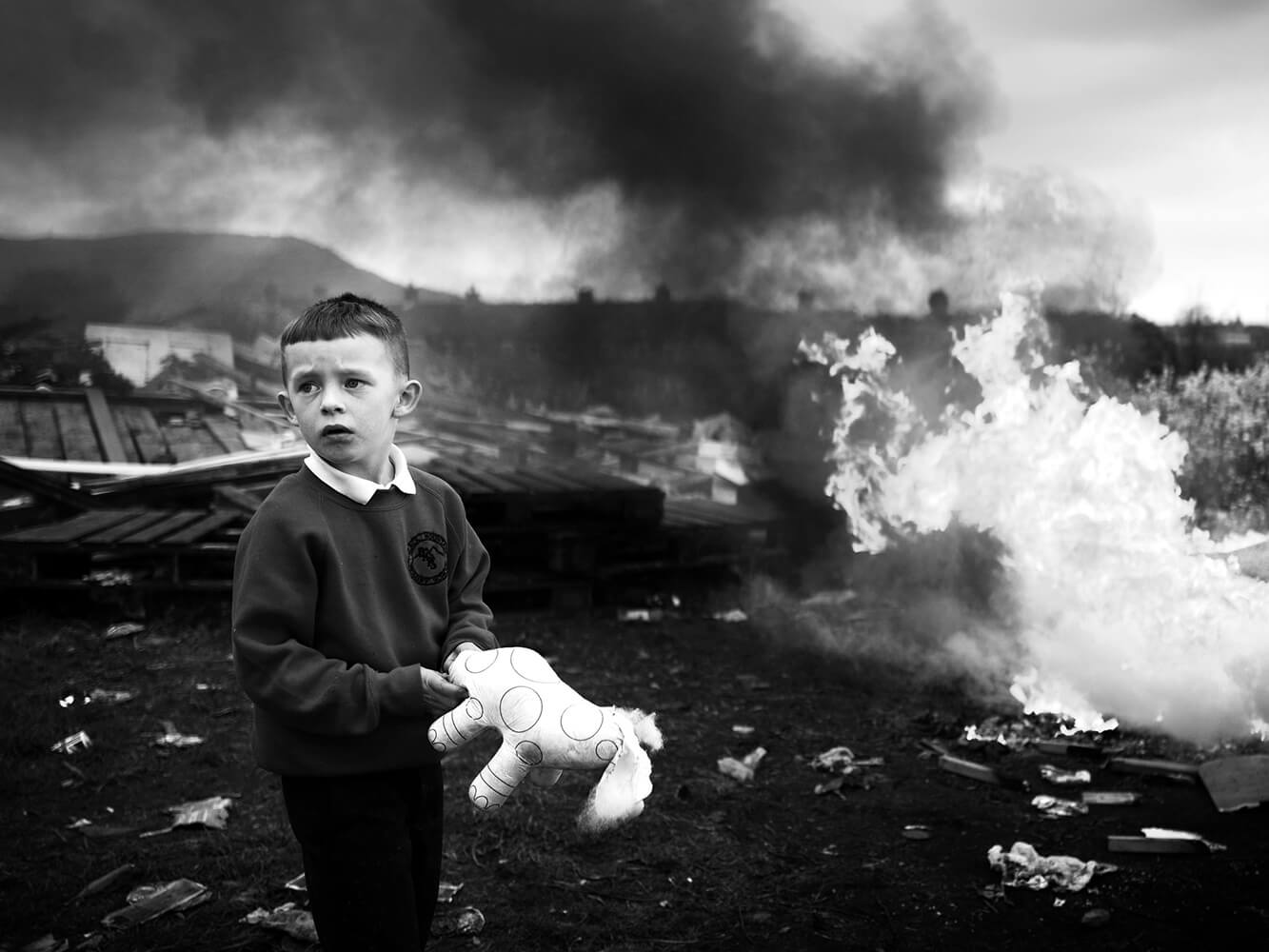
TOBY BINDER
A dark image full of contrast and destruction awaits the viewers gaze. The child stands in uncertainty as a symbol of youth and innocence within a burning and littered landscape. The viewer is left to question the boy’s reason for being there, and the fate that befalls him and his generation as they navigate an ever changing city. There are many themes woven into this image, from the many collected stories that a long term series like this affords the photographer. It’s a powerful single image. – LIFE FRAMER
Photographer statement – From my ongoing long-term project “Youth of Belfast” (2006-2023).
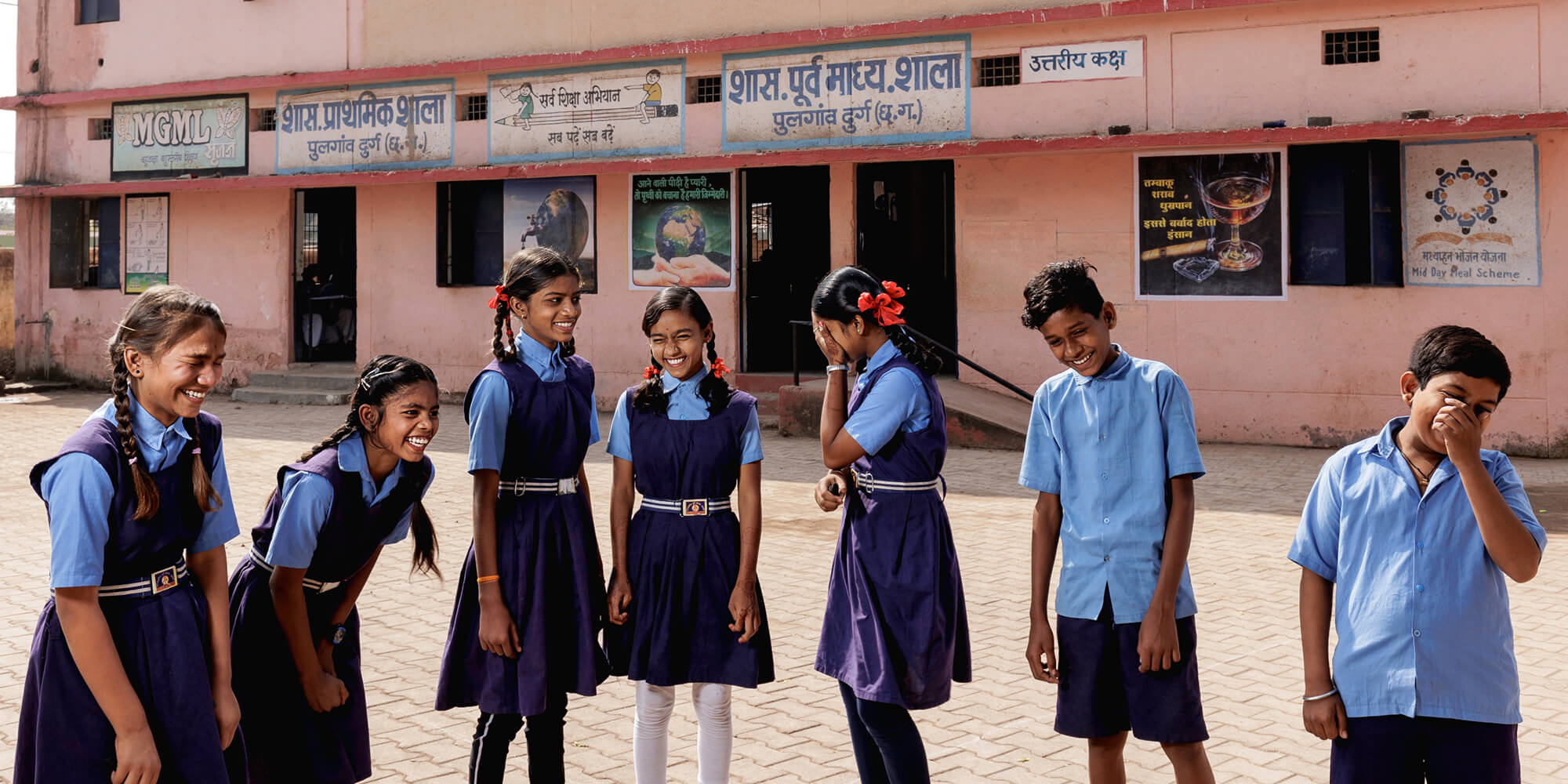
VEDANT SHARMA
An uncomplicated portrait of youth and play greets the viewer, as the subjects’ excited laughter appears infectious within their casual line-up. The photographer aims to celebrate this embryonic education programme, showing the positive effects of this ground-breaking effort in local schools. There is hope and ease within the image, as if echoing the success of equal education opportunities around the country. A spirited and optimistic photograph. – LIFE FRAMER
Photographer statement – Girl Child Education In India. With the ‘Beti Bachao, Beti Padhao’ (Save Girls, Educate Girls) awareness programme, India has seen a meteoric rise in Girl Child Education in the last decade. This has to overall development of the society at large, especially in Sub-Urban & Rural areas. This image series was made in a Govt. School in the central India state of Chhattisgarh. While the programme is nowhere near its complete success – it is a start in the right direction and the seeds sown years prior are now starting to bear fruits.
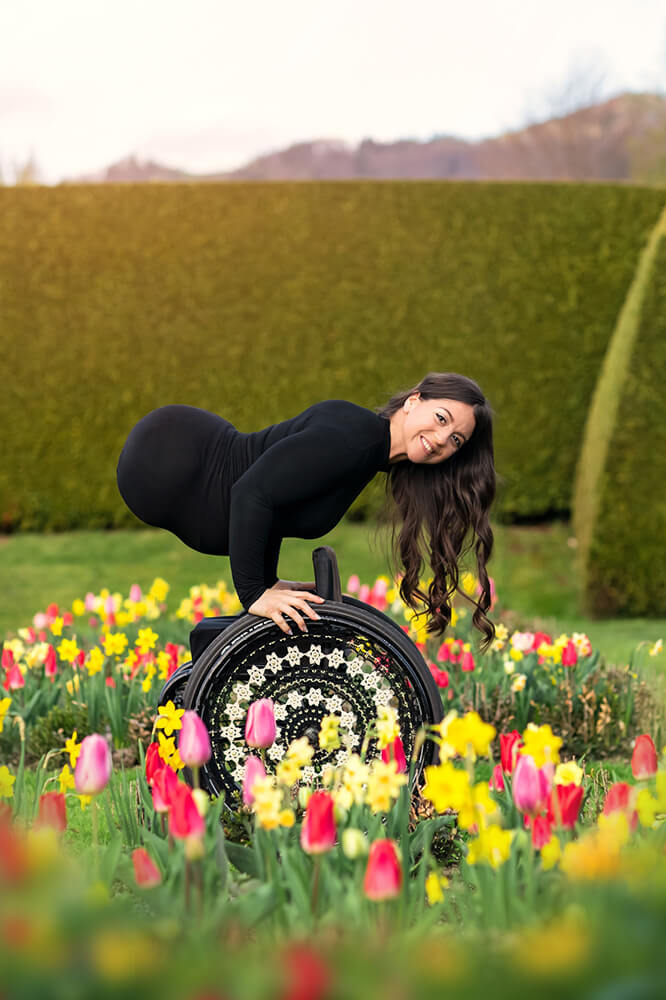
DAISY SEILERN
The subject’s personality instantly reaches out beyond the boundaries of this portrait. The photographer creates a space for her to express herself through her physicality and flexibility, as the viewer observes the composition of a classic portrait but with a not so familiar subject – the unfamiliarity an unfortunate legacy of a previous faulty, homogeneous society. A powerful portrait of positivity and resilience. – LIFE FRAMER
Photographer statement – Jen Bricker. Being born without legs never limited her. She fullfils her dreams as a motivational speaker, aerialist, best selling author and now mother. She says: “The circumstances that might seem ugly from the outside, were the beginning of my beauty.”
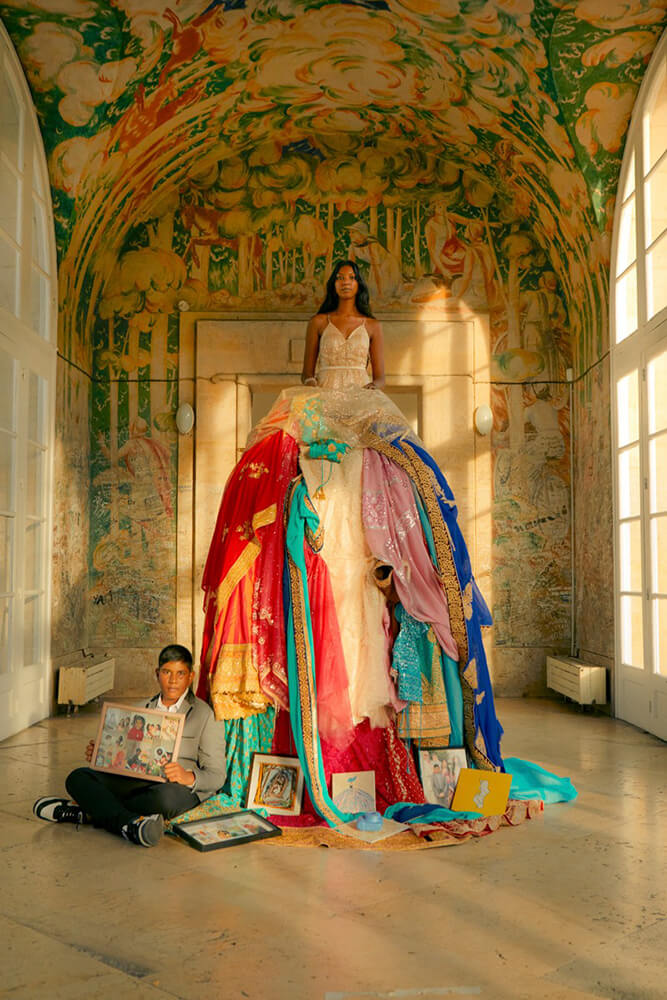
PIERRE ET FLORENT LAROSE DARTHOUT
These creatives – along with a talented team – have created a highly conceptual and intricate record of human behavior. The series depicts our many transitions of style and clothing as our lives evolve, and how we are influenced by numerous factors – internally and externally. This image is full of imagination, padded with tone, texture and extravagance. The considered concept and collaboration involved is commendable and impressive. The project serves as an archive of our existence, sitting between many sectors including fashion, sculpture and anthropology. – LIFE FRAMER
Photographer statement – Disha, Student. Dressing means choosing the way you present yourself to the world. Job, belonging, disguise, camouflage or even political act, clothing is omnipresent in our lives. It says “something” about us that we try to master, but which sometimes escapes us. It reminds us of who we were yesterday, who we dreamed of becoming, who were those who came before us. Everyone, over the course of their life, accumulates clothing, accessories and objects in quantity. Symptom of our consumerist societies. Very few are able to escape it. These objects sometimes cross the ages, pass from hand to hand, are stored, piled up, often forgotten, but also found, rediscovered, rehabilitated, sacred.
A “window” into the intimacy of those who populate it, this series of portraits is at the borders of fashion, performance, documentary and autofiction. High school student, sportsman, fisherman, lawyer, painter, men, women, adolescents… They all reveal to us through clothing a part of their memories, their lives, the lives of those who saw them born. The accumulation system is identical for everyone. The choice of clothing and objects is theirs, as is the choice of the location of the photo shoot. The composition of the accumulation is done by six hands with respect for the person documented. Each poses at the top of their dome, carried by their memory, reigning over their memories and their vestiges, left to the gaze.
The shots are contextual, often prepared for a long time, sometimes improvised. Digital or film, indoor or outdoor, in good weather or grey, daylight or artificial… Constraints arise from space and time, giving rise to certain disparities among the images. So many differences that make them unique experiences. The stories are told in the details, symbols and anecdotes that the viewer discovers through careful observation of the image. In the folds, seams and drapes, the imagination takes unexpected paths, searching beyond appearances.
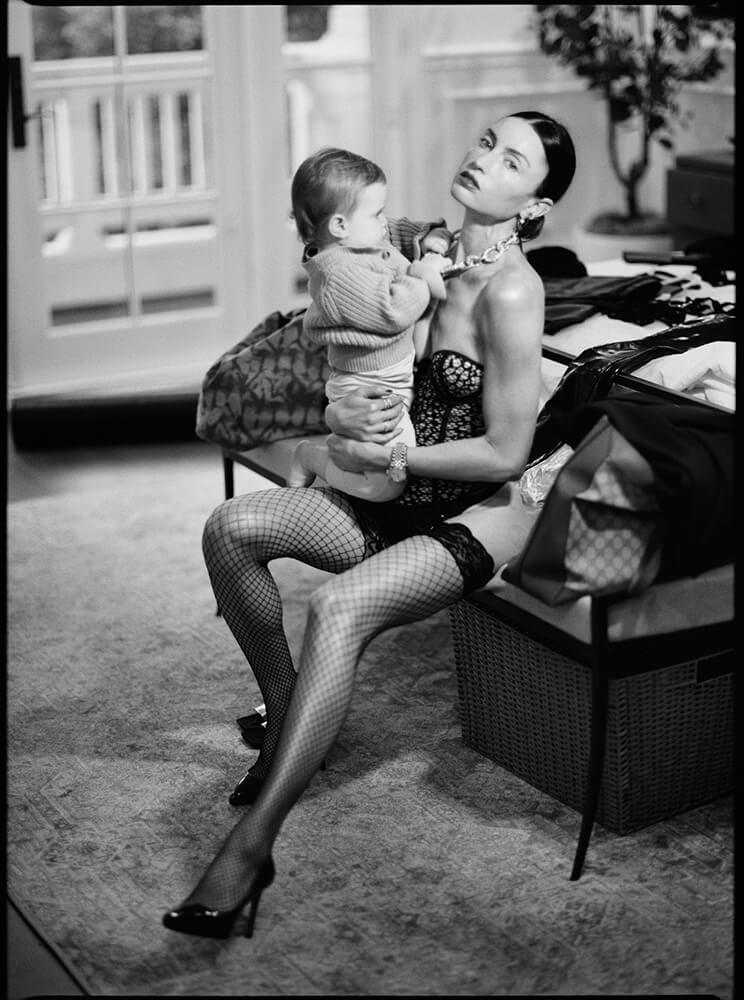
JONATHAN BENSIMON
The caption leads the viewer to believe this is a relatable scene – possibly an intimate fashion shoot playfully interrupted by the model’s young child? If so, then maybe an abstract or alienating situation for most mothers of young children to identify with. However, a baby annoyingly pulling at its parents’ accessories and vying for attention during a serious moment of concentration is certainly a relatable one. The expression of the woman is of expected frustration, knowing this situation or task won’t be as straightforward as planned. A stunning picture in itself, but also one of many perspectives of maternal life; simultaneously managing multiple responsibilities and commitments. – LIFE FRAMER
Photographer statement – The human connection felt while capturing images such as this was as powerful in the moment of creation as in their ultimate presentation. These human moments, like well-timed punchlines in life’s grand comedy, often arise from a connection, relatable scenes, or dichotomies that invite us to contemplate the delightful chaos of the people around us.
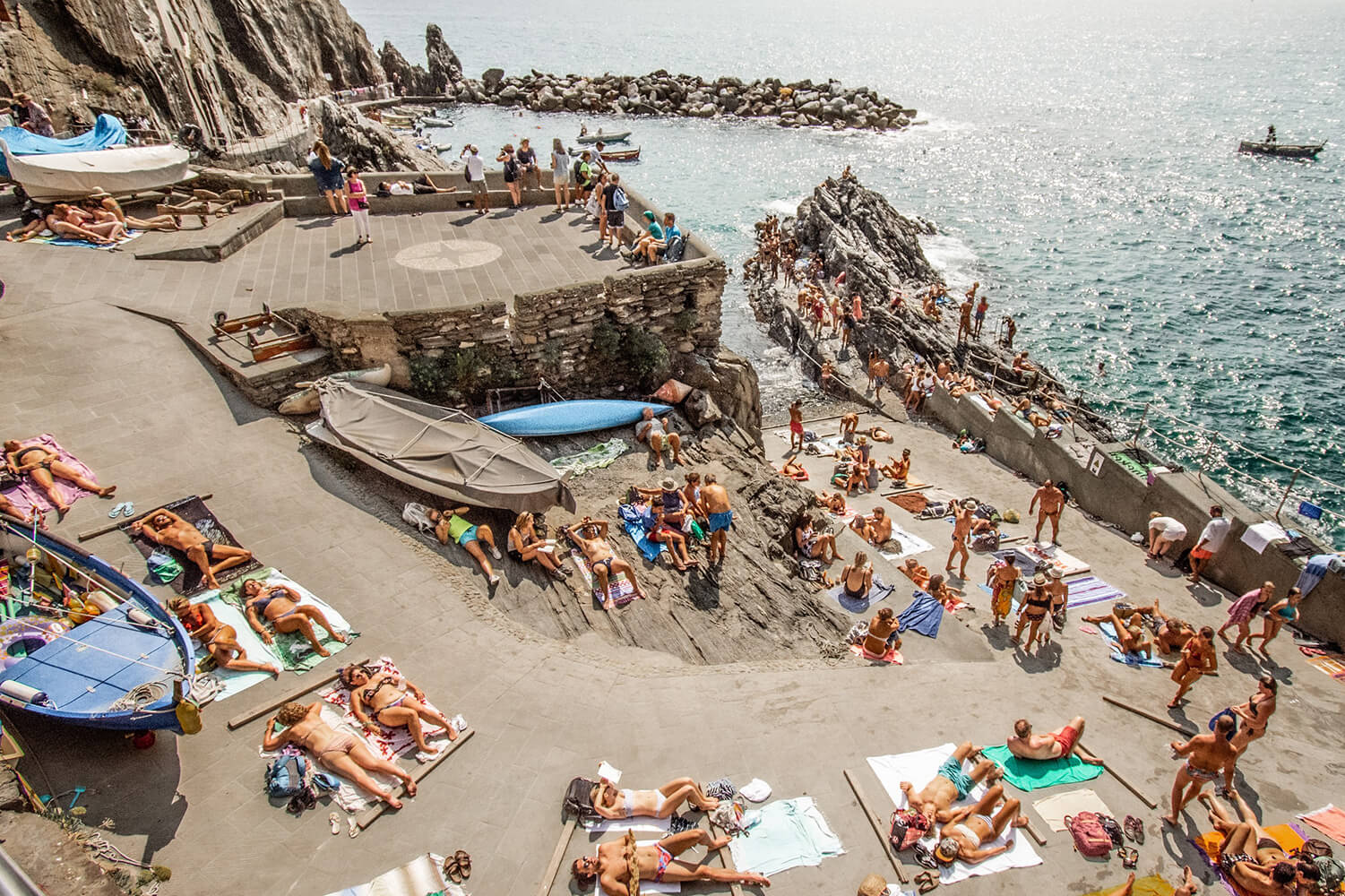
DAVID ABIZAID
The viewer’s gaze is led down the winding slipway as this curving perspective dominates the sun-drenched, seaside scene. Levels of sunbathers create a pattern of tanned bodies, stacked in sections that lead down to the more ambitious figures lining-up to be immersed in the cooling waters. This is an envious scene for any viewer to easily escape into, ideally viewed as a oversized large print to allow the details to be poured over and to emphasize the inviting aspect of this compelling image. – LIFE FRAMER
Photographer statement – Manarola Sunbathers, Italy.
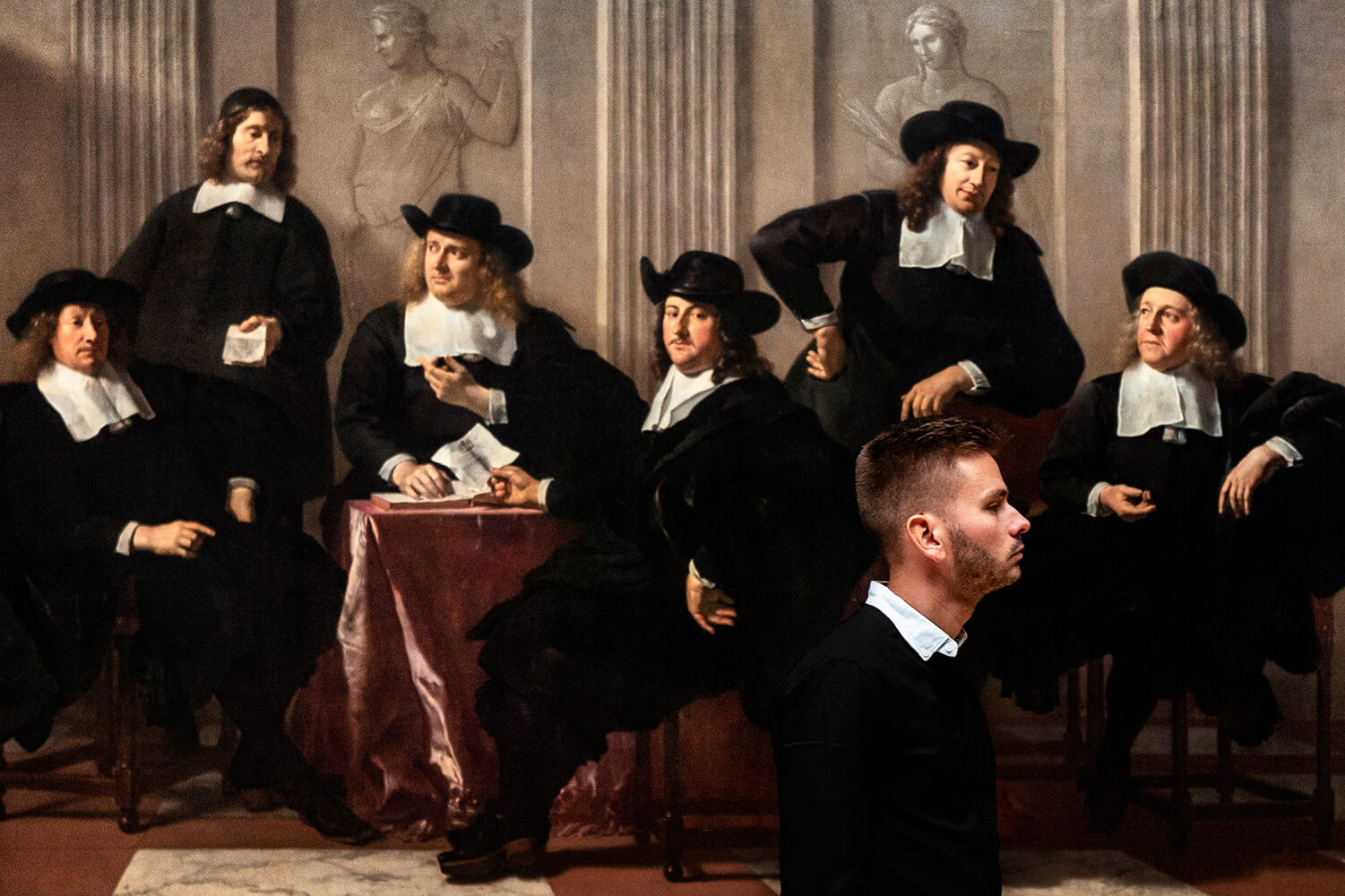
EDUARDO TEIXEIRA DE SOUSA
It takes a moment for the viewer’s eyes to understand this as a photograph. The one living subject subtly interrupts the constructed scene by a Dutch Golden Age painter, encouraging the viewer to put the image together and consider the caption of equality – from both a genuine and ironic perspective. The photographer harnesses the painting’s simple but rich color palette, prompting the viewer to question how much has really changed since then between class, race and gender? – LIFE FRAMER
Photographer statement – They are all equal now / Amsterdam, Netherlands.
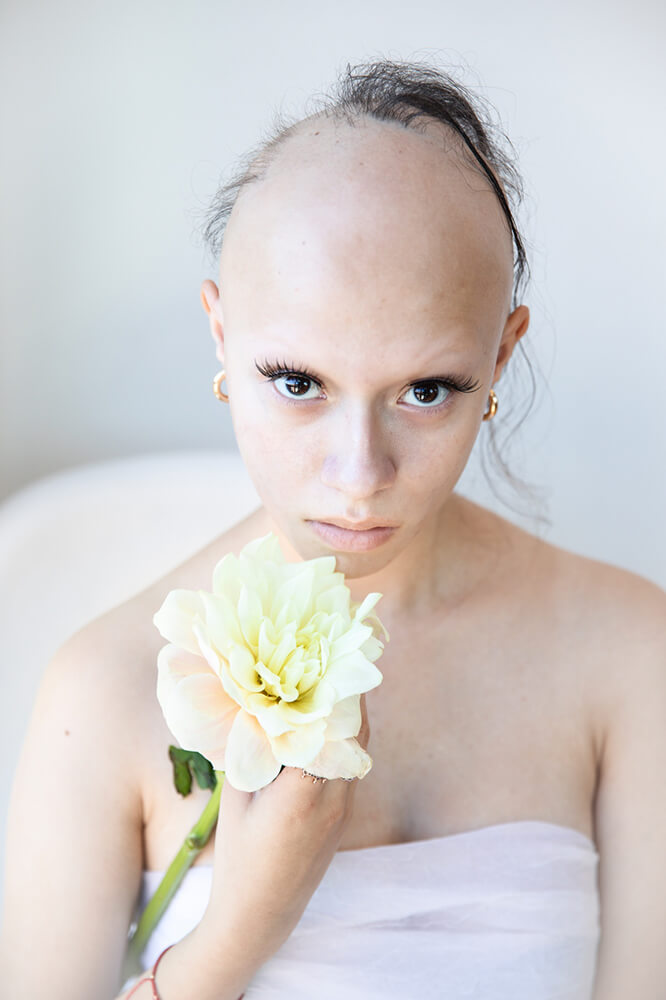
YUKI NEO
This is a thoughtful and considered portrait, created by both photographer and subject to bring awareness and understanding to a difficult topic. Alopecia affects about 160 million people worldwide yet traditional Western beauty standards act to minimize those who suffer with it, forcing them to figure out their beauty on their own. The portrait harnesses a raw and honest emotion, with beauty and strength intertwined within the subject’s expression. This work, as a series, should reach a wider audience to be truly seen and understood in many perspectives. – LIFE FRAMER
Photographer statement – Alexis has her mission: to advocate “diversity in beauty”. She has Alopecia, an autoimmune condition that causes hair loss. She started loosing her hair at the age of 5. She has been fighting with loneliness, and stereotypes in viewing beauty almost all her life. The simplicity of Alexis’s beauty and the flowers brought harmony to our shots.
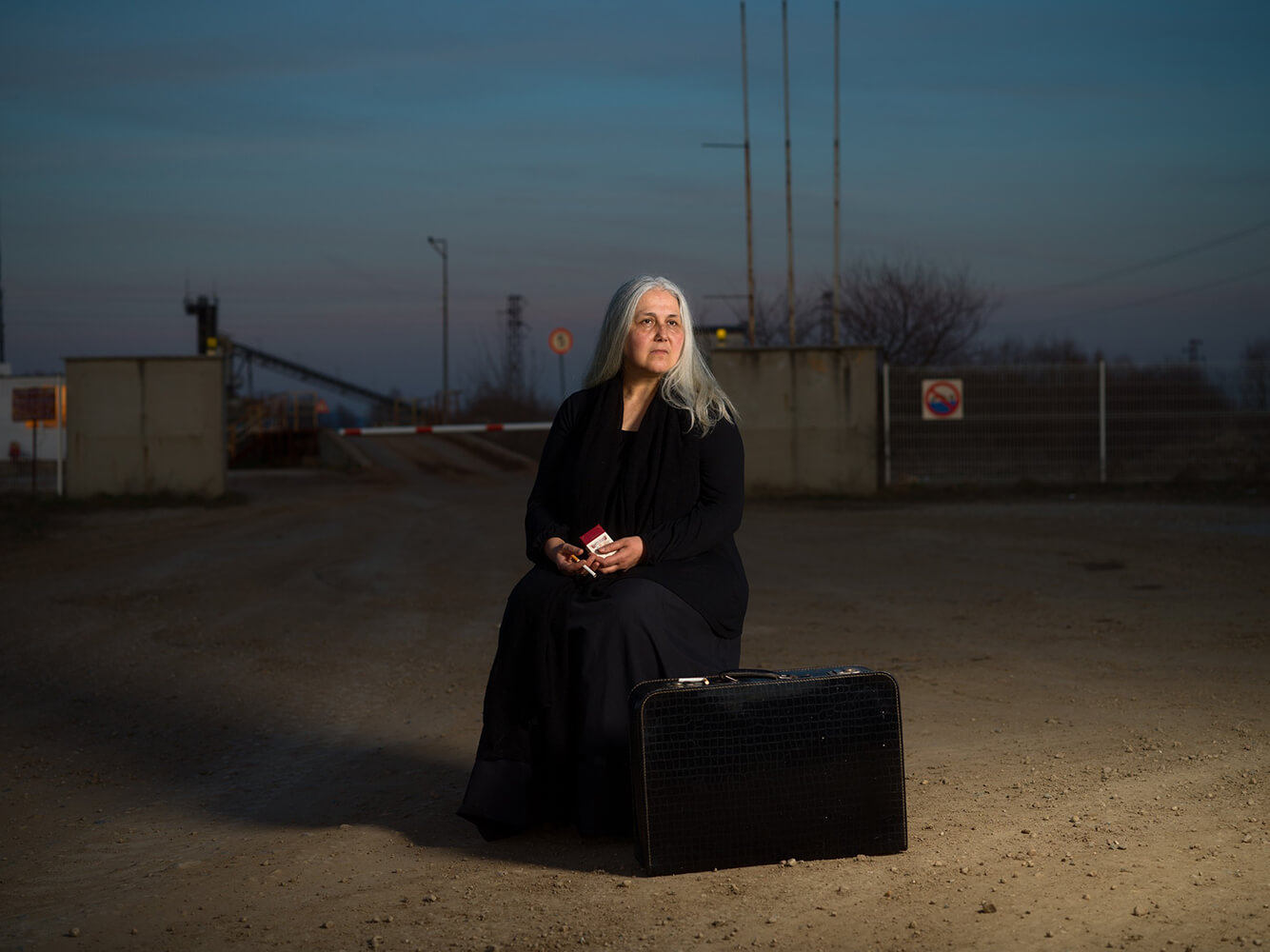
VLADIMIR KARAMAZOV
The accompanying caption almost evokes more questions than the peculiar portrait does itself – is the subject leaving one life to lead another, or is this a visual metaphor about death and the afterlife? The surrounding gradient of darkness anchors the scene with a sense of seriousness, while the industrial signage in the background indicates some element of foreboding – as if to suggest that whatever is next for this woman is a permanent transition. This is an extraordinary portrait, carefully composed with a considered concept. – LIFE FRAMER
Photographer statement – On the border of the other life.
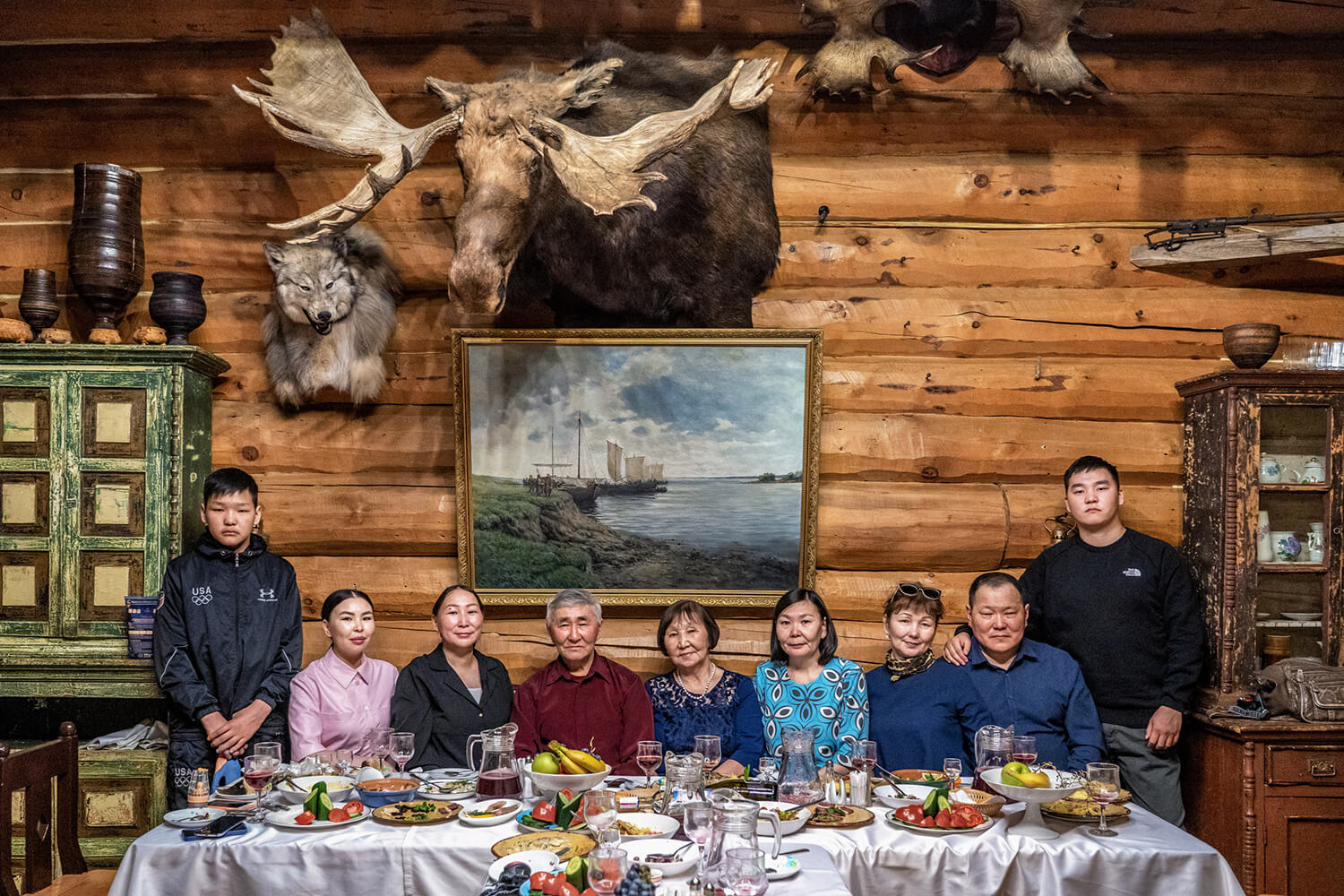
NATALYA SAPRUNOVA
A remarkable group portrait greets the viewer, full of detail and layered with culture, symbolism and generational history. The celebration centers around a table of banquet standards, laid like a painting from the renaissance, weighting the significance of this young person’s achievements and future promises. It’s an extraordinary photograph. – LIFE FRAMER
Photographer statement – Birthday of an Evenki Hunter from Yakutia. An Evenki family from reindeer herders indigenous people in Siberia gathering together in a ethnographic yakutian restaurant to celebrate the sixtieth birthday of Prokopii, renowned hunter in Yakutia.
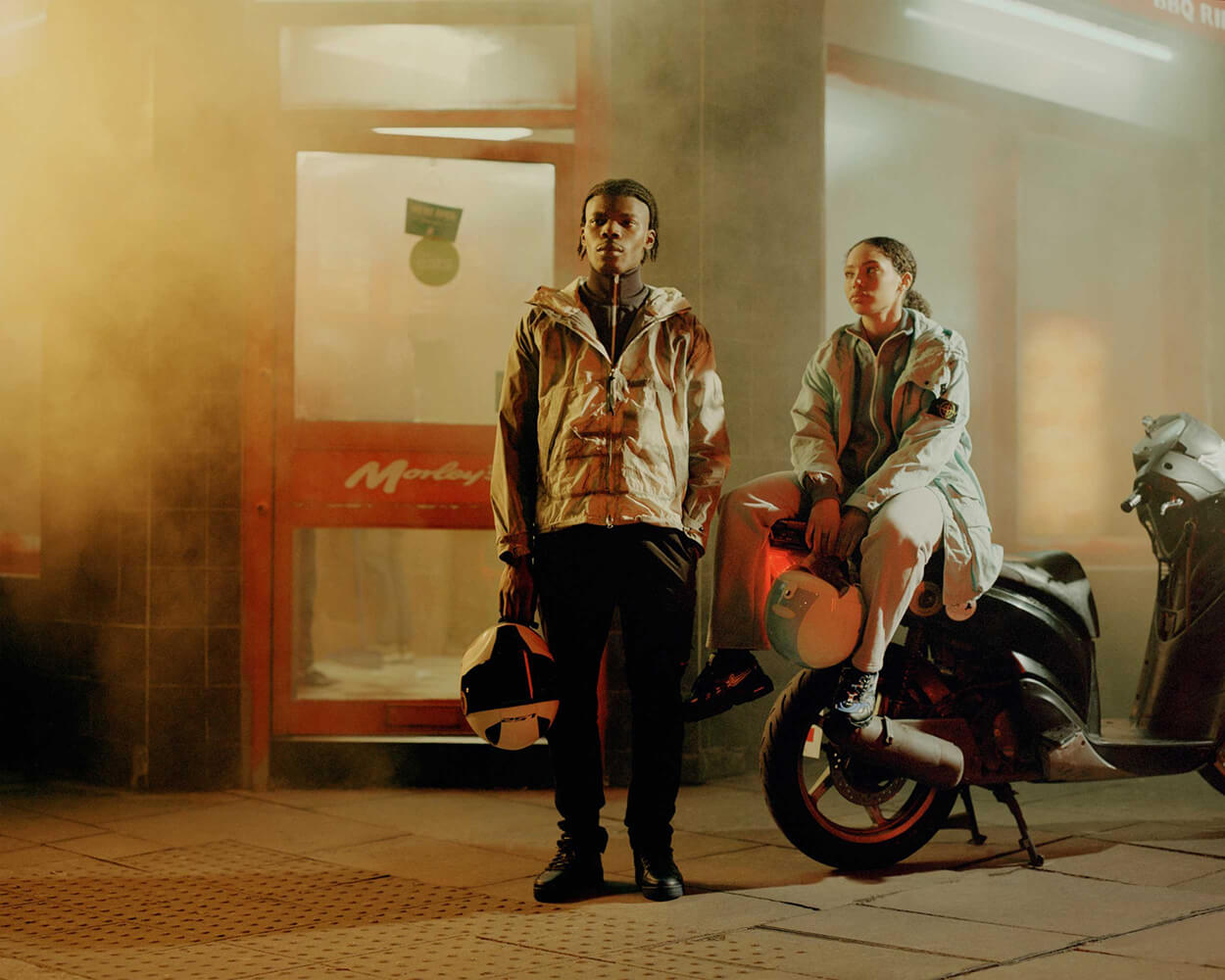
SAM WRIGHT
The photographer’s joy for their work is apparent in both the accompanying text and their meticulously created imagery. Their adoration for their hometown and all the stories within it has allowed them to see the charm of life unfolding in the most minute and unremarkable ways. The viewer studies the subjects and their faces, trying to understand what is so captivating out of frame, looking for clues in the murky, misty street corner. Capturing the subtleness of the mundane in enchanting ways is this photographer’s skill. – LIFE FRAMER
Photographer statement – From the series Commute. I first started out in documentary photography, shooting DIY punk gigs in my hometown of Sheffield. I loved how photography could be used to capture a mood, feeling and atmosphere of a moment. The excitement of visually reliving a moment had me hooked. Alongside my ongoing personal projects – tender portraits of local residents in Sheffield, or mechanics with amusingly homogenous mullet hairdos in Australia, I’ve shot adverts for McDonald’s, KFC, and the BBC alongside editorials for The New York Times, How To Spend It and ES Magazine. Despite these big budgets, I aim to maintain a sense of warmth and tenderness in all my images, regardless of the subject matter – my portraits capture life as it unfolds, and often read as film stills rather than photographs.
Visually, Commute feels like a noir thriller full of suspense. Shot after dark, with copious amounts of fog and harsh weather, my subjects gaze out past the camera’s frame, as if transfixed by some kind of action occurring elsewhere. My subjects, likewise, are full of character. I have always been drawn to people that have a story to tell. “The beauty of everyday life is a big inspiration throughout my work, which is why I often choose this as my focus.
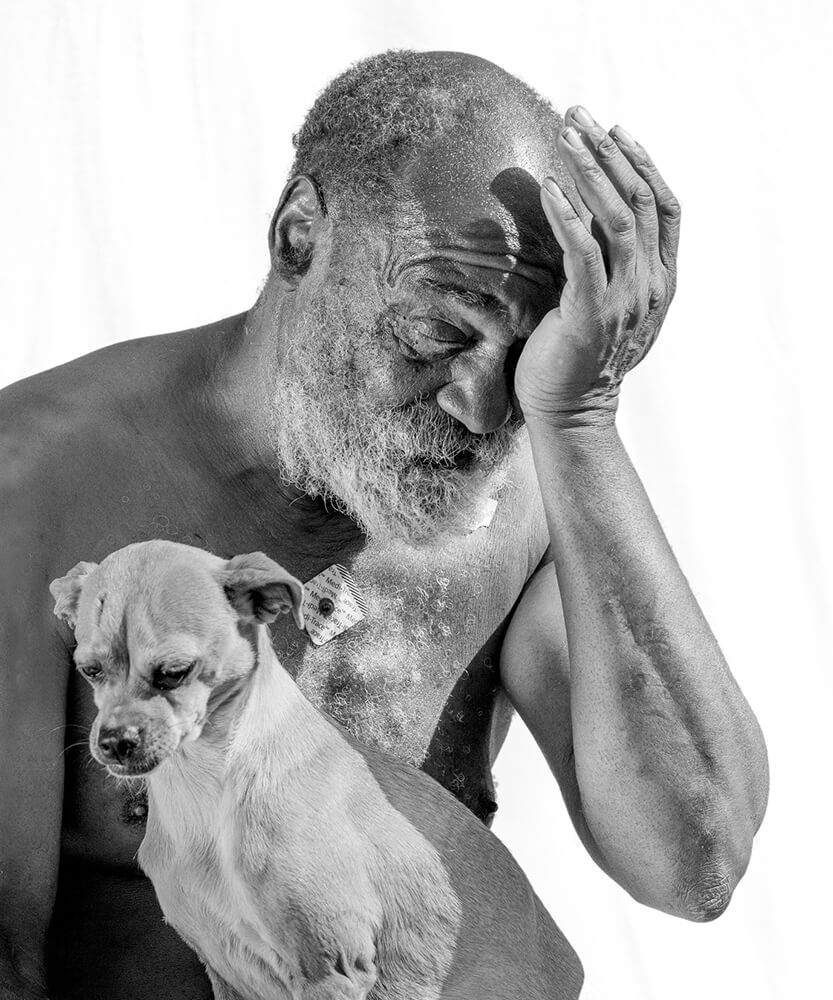
GEORGE PHILLIPS
The black and white portrait has an immediate resemblance to the sculptures of the great philosophers – the subject’s head hangs in frustration, as if tortured by their own mind and thoughts. The photographer carefully isolates the subject and his dog with a stark white background, illustrating how they have become separated from society, their families and community. It’s clear the photographer has dedicated a great deal of care, time and their practice to this subject, and it needs wider recognition on a more public scale – an understanding of the future of this project would be important. If people aren’t willing to acknowledge a person suffering in destitution as they pass them on the street, why would they take time to acknowledge them through portraits in an exhibition? How these stories are communicated is key to how society will change its perspective of homelessness and poverty. – LIFE FRAMER
Photographer statement – This project is about seeing the humanity of homeless people. When I first began, the working title was “Anything Helps: Signs of the Times.” The people I saw begging on street corners were always holding a sign, and I liked the title’s multiple meanings. However, years later, after meeting, interviewing and photographing dozens of homeless people, I realized that not only were the signs relatively unimportant, most tended to say pretty much the same things. In retrospect, that’s not surprising. If you’re going to survive on the street, you have to learn what works pretty fast. And what works spreads quickly among the homeless.
The story is not about signs. It’s about homeless humans. Often portrayed, and seen, as a blight, homeless people can be dirty, drug-addled, sick, mentally ill and sometimes dangerous. Glimpsed only occasionally and in passing, amid piles of garbage or on street corners begging, they are seen as a problem; not humans. The reality of course isn’t that simple, and homeless people aren’t always who you think they are. I wanted to find out more of the truth about who these people really were and share it in an up-close and personal way. Who are they when seen for themselves, isolated from their environment? Who are they as people?
In more than two years of working to produce this portfolio of twenty-five images, I felt I had enough diversity of people and stories to reveal some truth about who they are. The truth isn’t always pretty, however. have found myself being forced to confront a few of my own all-too-human fears. Will I contract Covid or some other disease? Will I be assaulted? What if I found myself poor, sick, addicted, abandoned or homeless? In the words of Susan Sontag, “All photographs are memento mori. To take a photograph is to participate in another person’s mortality, vulnerability, mutability.” It is clear that the experience of photographing, interviewing and getting to know these people is changing how I think and feel about them and about homelessness. However, even as I continue working on the project, what remains murky are answers.
These intimate, clinically sharp, un-posed portraits of people on the street isolated against a white backdrop starkly reveal the scars of hunger, abuse, drug addiction, sickness, injury, mental illness, bad choices and plain old bad luck that are branded on faces, bodies and souls. The ‘purity’ of a white backdrop becomes ironic, while eliminating the unpleasant distractions of the usual piles of garbage and assorted detritus. Nonetheless, the bigger-than-life exhibition prints are as mercilessly detailed in their unadorned frankness as the stories told by the people themselves, and they hang on the wall just as unprotected.
Andre: “I came out of prison in 2020 after 41 years. I committed murder. It should never have happened. I had a job and it didn’t bother me, but I had to get away. It’s a bumpy road out here. It shouldn’t be like that, but you’ve gotta understand what’s going on out here. You set up your camp and then you gotta pack your stuff up, get another. People have nowhere to go for help if they really need it. My family comes by here quite a bit, but I don’t stay with them. They have their own life to live. I have accepted it, so I stay this way. If I could, I be inside, but not in prison. I just found out my health was kinda bad. It has to do with what I did. But I checked myself out of the hospital. I didn’t want to stay because of my dogs. But I gotta go back. My heart’s not right. I figure I’ll wait about a week…a month. The people that don’t understand about homelessness, try to see through the eyes of those out here. Compassion for human beings here. We all got it. It’s buried in us. Did I kill a person? Yes, I did.”
